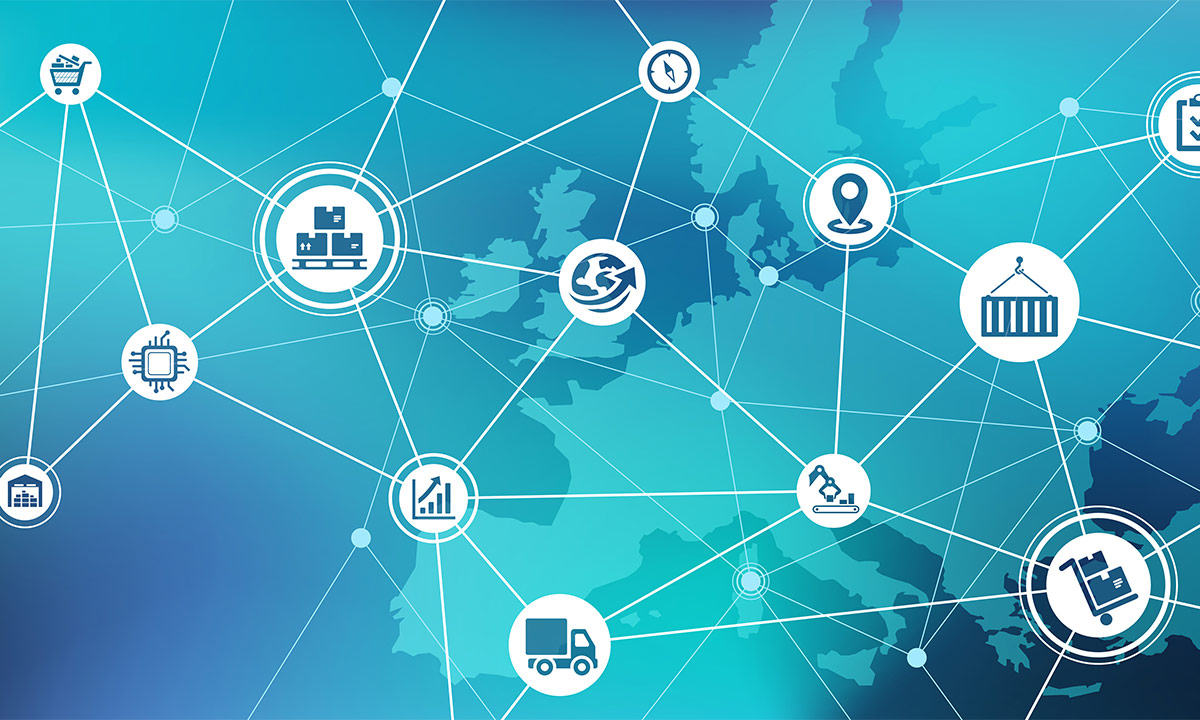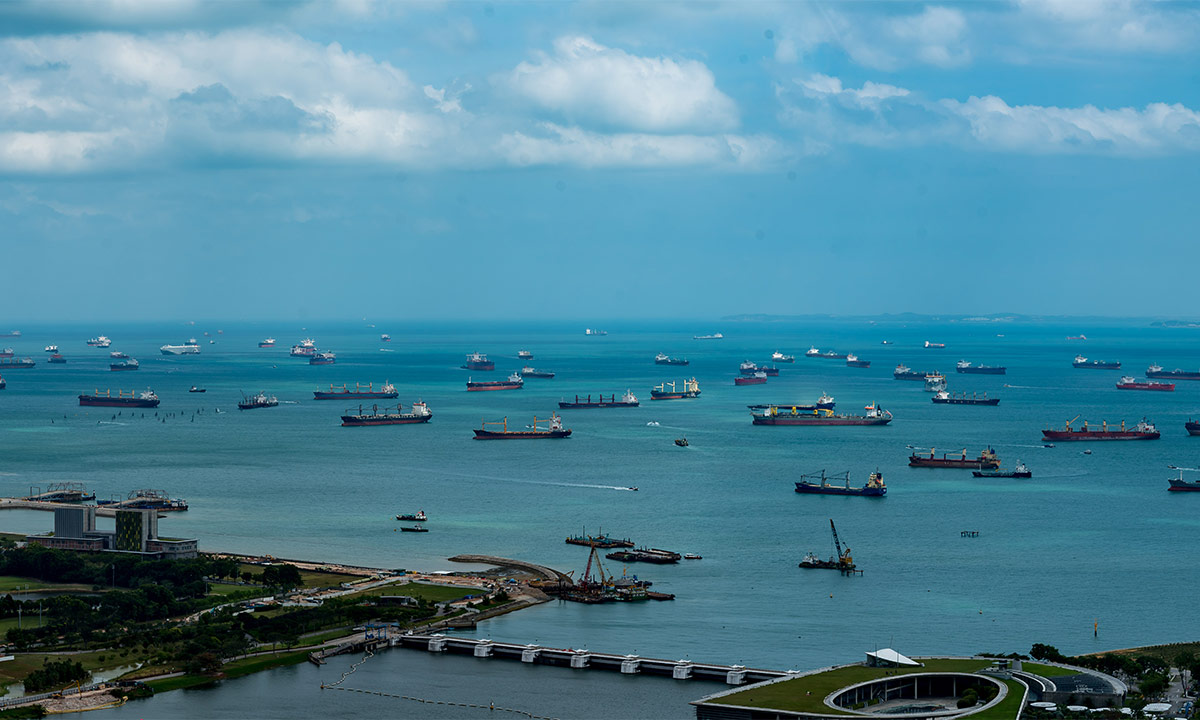"We will see a significant shortening of supply chains"

Mr. Troll, how much are extreme events like the Corona pandemic or the war in Ukraine changing the conversation around global footprint strategies?
It is true that the totality of factors influencing Footprint decisions has not changed significantly. But their weighting has shifted significantly and the debate about them has intensified. Cost considerations in particular are not as dominant as they were just a few years ago.
The importance of supply chain resilience has also increased significantly. Corona in particular has shown how vulnerable supply chains can be in global crises when resilience is low and one-sided dependencies characterize the network. This has changed the way of thinking.
The second point that has significantly changed the perspective on supply chains is the issue of sustainability, especially the carbon footprint. Companies are increasingly looking at their greenhouse gas emissions. This is driven both by legislative and consumer pressure, but also because sustainability is relevant to more and more companies as an essential part of their vision.
Do these changes also lead to new trade-offs in the design of Footprint strategies?
Many of the conflicting goals existed before. What has changed is the importance of geopolitical and sustainability factors. For example, people have always been concerned with geopolitical supply chain risks and the extent to which they should invest in countries that carry political risks and uncertainties. On this basis, for example, there were decisions against sourcing or manufacturing locations in China as long as ten years ago. Similarly, the trade-offs between supply chain stability and cost advantages are not new. In the meantime, however, qualitative criteria have taken on much more weight in view of the emerging shielding, blocking and political decisions that are increasingly being made without taking international partners into account.
Many of the global risks that have since materialized were identifiable at an early stage. Nevertheless, in many cases people have continued to do so. Why?
One important reason is certainly that people have long believed in change through rapprochement. This was an overarching consensus, at least in business circles. People deliberately did not turn away, but wanted to try to exert a positive influence in our sense through economic relations and earn good money in the process. That one was wrong with this concept, after all we see today, is tragic. However, it was never just a question of favorable production or procurement locations, but always also of opening up the huge markets in India, China and other economic regions, which is why close proximity and appropriate locations were needed.
How disruptive will the implications be for footprint geography?
Changing global networks takes time - many months, often years. It is not possible to respond fully in real time to the extreme dynamics and severity of the current crises. Many companies that have a high dependency on Chinese production sites and suppliers, for example, are now dealing intensively with this situation. The risks were known. They have now become facts.
Basically, sustainable globalization means producing and supplying from the region for the region. It has never been a particularly clever idea to supply the whole world from a few factories. This only makes sense in very few cases, for example when it comes to very specialized technologies that can only be mastered at one location. The current situation now demonstrates how important diversified networks with shorter supply chains into the regions are.

Is Europe and other regions gaining in attractiveness in view of the current crises?
In our thinking, Europe has always played an important role. The continent is very diverse, from absolute high-wage and high-tech locations to countries that are close to, or even in, the EU and have surprisingly low wage levels. Even in the past, when looking at full costs, it was often not worth going to Asia. It has always been very attractive to look for and develop European locations.
For the Americas region, Mexico, also in its role as a NAFTA member, is a location with very great potential. Brazil remains relevant, especially as this large market can hardly be developed from outside. In Asia, we see a certain shift to countries such as Indonesia, Malaysia, Thailand, and also Vietnam, where, however, there are serious political risks. Hong Kong is increasingly losing its importance as a hub between China and the rest of Asia, especially South Asia. It remains to be seen which locations will benefit from this in the long term.
Another region that has been under discussion for a long time is North Africa. On the one hand, due to its proximity to Europe and thus relevance for products that require short supply chains. On the other hand, due to the very low location costs. However, the region is politically very controversial. This has kept its importance low so far, and I don't think that will change quickly.

In the pandemic, Remote Work got a huge boost. What effect has this experience had on Footprint strategies?
It has become apparent that many more topics can be handled remotely than was thought in the past. The support of remote sites by experts has become more natural. Of course, where production sites are physically set up and operated, a certain amount of know-how and decision-making authority must also be available on site. But it is no longer necessary to send armies of managers, engineers and technicians. Especially in areas such as R&D, engineering and service, we have become much more decentralized and independent.
All of this changes the evaluation of certain locations and influences location decisions. On the other hand, this is changing the work culture all over the world and also has an impact on the question of where and how to look for employees. In some areas, the labor market has become very global.
You also touched on sustainability, particularly carbon footprint, as a factor that is increasingly influencing footprint decisions.
A large proportion of Western companies have plans to become climate-neutral in the next few years. Of course, this depends heavily on the energy intensity of the respective industries. In some sectors, very high amounts of energy are required, which until now could almost only be achieved with natural gas. Here, the technological conversions will take longer. So it is not only the availability of renewable energies that is decisive, but also their applicability in the plants. In this respect, the greater relevance of the carbon footprint will strongly influence the expansion and design of global factory networks. At the same time, companies see the provision of an environmentally friendly energy mix as a task for the regions. That these framework conditions will become a strong location argument in the near future, I would not go that far today. Particularly since, as is well known, opinions on which form of energy is how environmentally friendly differ greatly even in Europe.

We are all familiar with the almost surreal images of the gigantic shipping jams off the Chinese coast. At the same time, transport costs have risen exponentially in recent years. Have these developments not caused one of the supporting pillars of globalization to collapse?
I don't see it that way. The essential laws, namely the total landed cost, the availability of qualified personnel and a strong supplier network will remain valid alongside the sustainability and resilience aspects. That is why I believe that we will continue to have global production networks and thus container traffic between the continents. An apple from Lake Constance is not necessarily sustainable if the first 20 km are covered with a miserable eco-balance. It depends on the right design of the entire supply chain. Nevertheless, I am sure that we will see the very long and complex supply chains in the future far less often than today.


